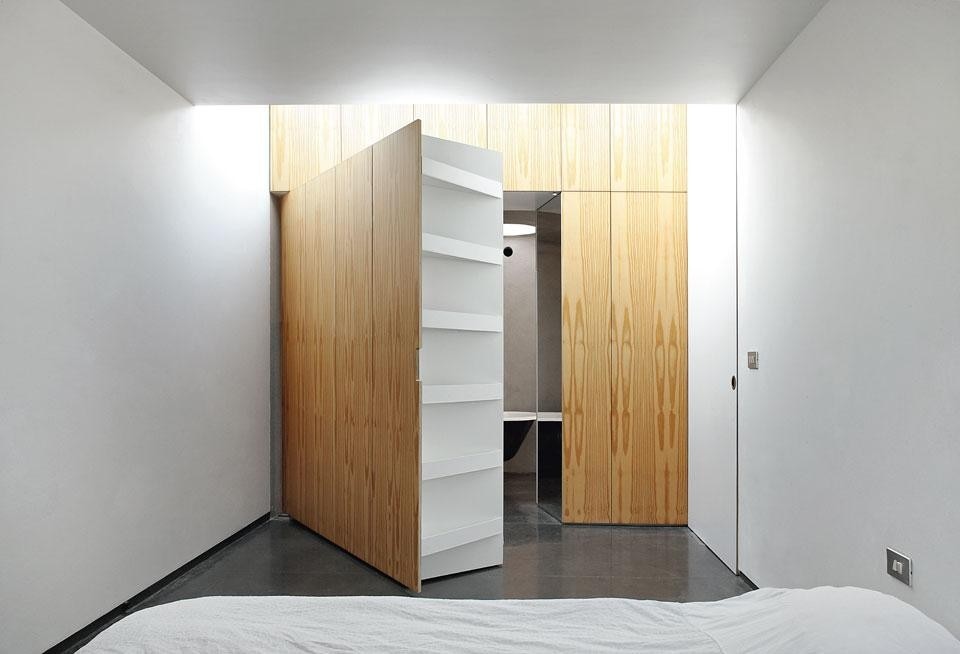The central station of Liège is a huge, arching glass vault, glamorously framing the city and making its slide into decay appear all the more obvious. It is a stark juxtaposition to the sad sight of mainly weathered, run-down buildings, gaming halls, phone shops, shabby bars and many dilapidated workers' sheds.
The steel industry brought the city its prosperity, but the golden years lie well in the past. Liège's last big steel company, ArcelorMittal, closed its doors last year, and its factory, like an enormous organically grown machine of corrugated iron, is idly disintegrating along the Meuse. Across the river stands another corrugated iron keystone of Liège's society: Standard Liège's football stadium, although this symbol is still neatly painted red.
Liège used to have the "bread and games" system figured out. Currently, however, it seems that beer-making is the only traditional industry that remains stable, making it more of a booze and games society. These are Nicolas Firket's stomping grounds. The promise of appending socialism, which used to give this community its forward push, has largely been replaced by the promise of a consumer society, Firket claims.
Liège's inhabitants are very modest and easy to please, as long as they can throw a good party every once in a while; they are experts at partying. Firket himself is also quite modest about architecture's role in turning things around in Liège. Still, his design for Villa ARRA can be seen as a statement, a true manifesto of how things can be done differently.
The people who commissioned the house were a young couple in their twenties with two small children. Not particularly well-off, but very committed and with a passion for DIY, they stumbled on a plot of land purely by accident and instantly recognised its potential: set on a hill, facing south, and with a marvellous view over the rolling hills.
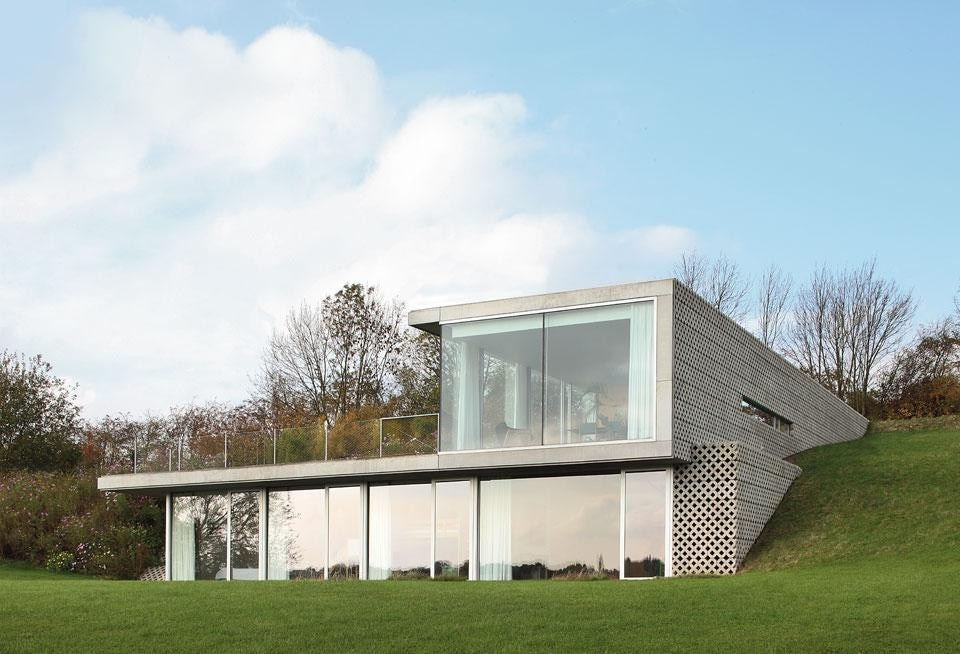
By chance they happened to meet Firket, who was just about to exchange Rotterdam, where he worked at oma, for Brussels to set up on his own. Together with his new colleague Marie-Noëlle Meessen and the clients Aline and Régis, he ventured to re-invent the private house.
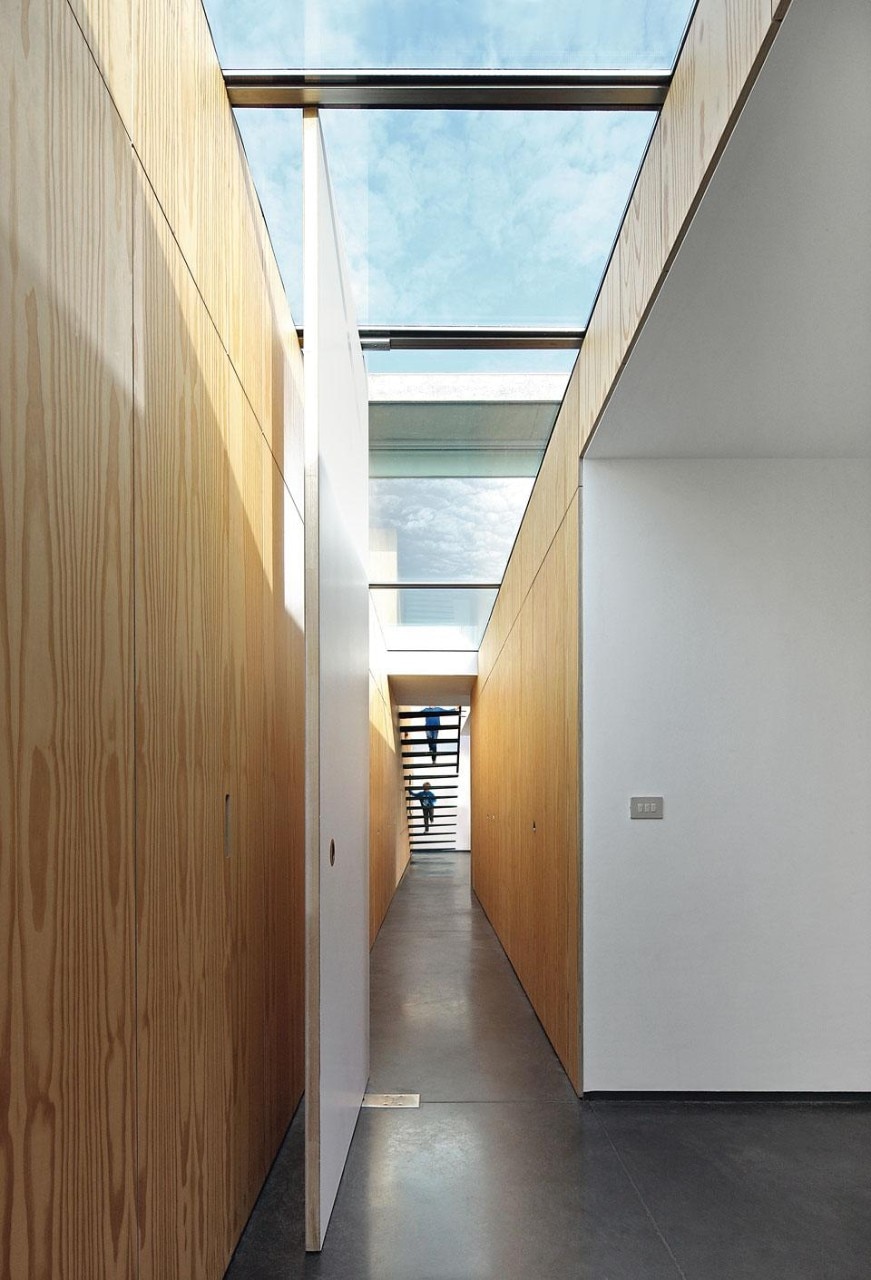
His aim is to create space that undoes the alienating effect of consumer society—the disconnecting consequence of inveterate habit, the chain of routines and domestic chores to which we all fall victim. This villa would give rise to none of the above. Firket wants the house to feel like a touch of reality, but ironically it achieves the opposite and transmits a sense of the surreal.
On arrival one is immediately challenged to disregard one's preconceptions as to what a house should look like. Because there is no house. An open field containing a platform launches ones gaze into the distance. It might only take a fraction of a second before one realises the platform is actually the roof of the house, but this brief moment is enough to tap into a different frame of mind. And this other consciousness, away from everyday life, continues to be stimulated by a less obvious, new, more graphic and abstract reality.
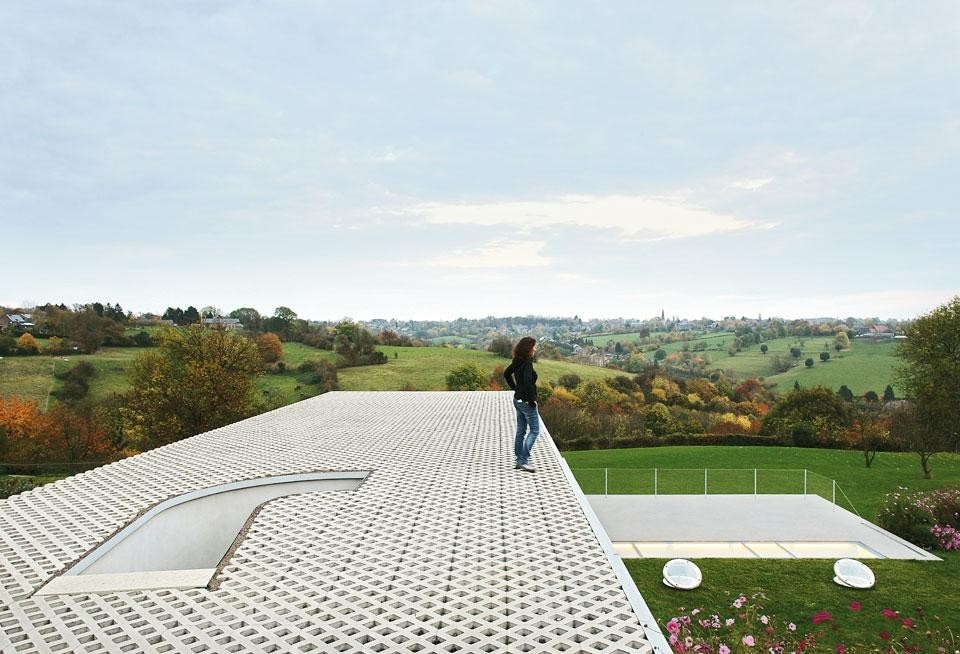
Like a rabbit in Alice in Wonderland, the inhabitant disappears underground, when he or she comes home, through a strangely warped well hole in the platform roof. The stairs lead one level lower, giving access either to a terrace or the inside. Made of glass and with a perforated aluminium sheet for privacy, the front door takes you through to the kitchen and living room. It is a space where one could put a sofa and a TV, or perhaps set up as a dining room, but neither has happened. The inhabitants and their young children have been living there for almost a year, but the place hasn't been furnished in a family-orientated way.
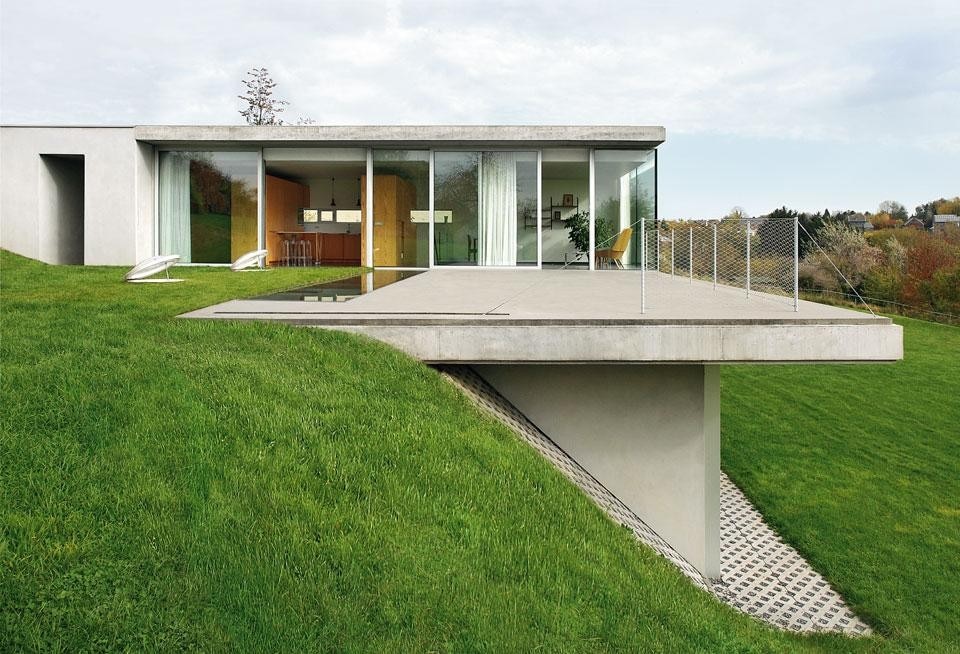
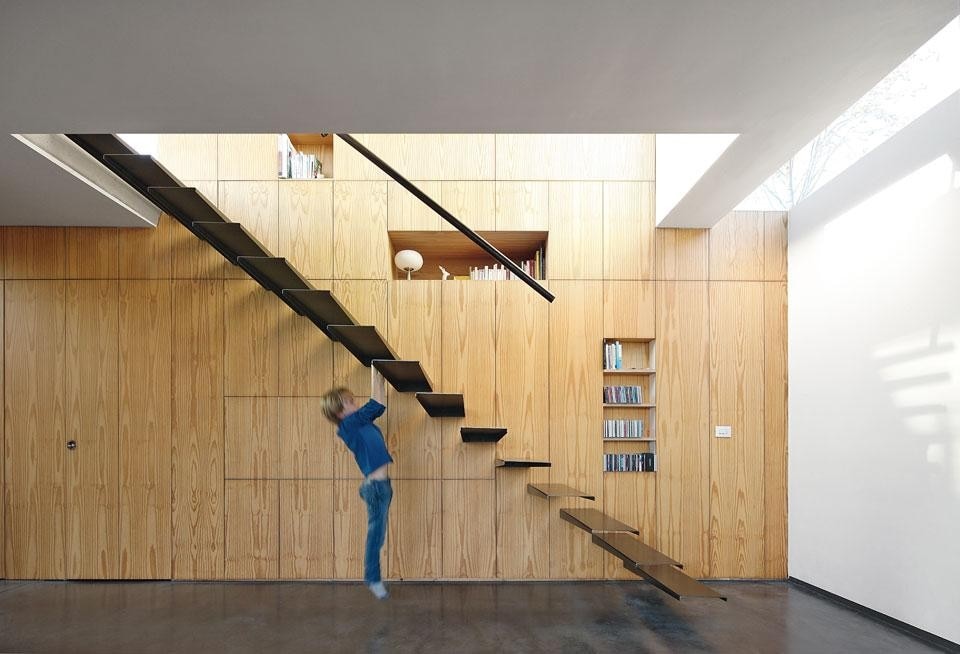
In Firket's view, "The involvement of the client gave this project the energy which no private firm would ever be able to mobilise. Private firms don't sleep with the problems." Details were thus solved by a team of local builders whose professional pride was self-evident. It was Régis who took care of the structural calculations, who organised the production of the steel-plate stairs at a friend's factory, who installed the entire climate system, electrical wiring and plumbing himself. And if God is in the details, then he must also be in the bedroom doors. "When I see these details, I am always struck with a deep sense of satisfaction," Firket comments.
